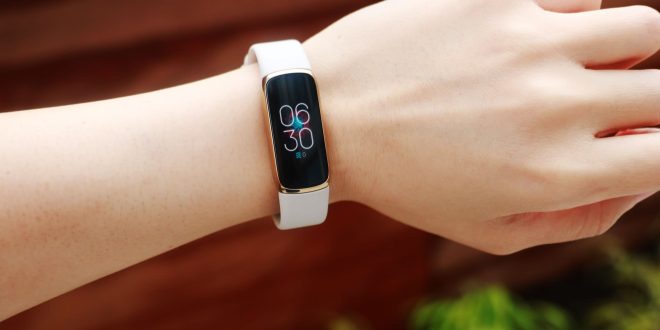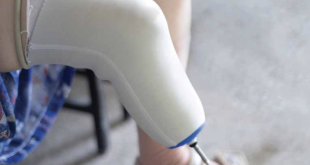“The evolution of wearables transcends mere fitness tracking; it’s about empowering patients to manage chronic conditions and prevent serious illnesses.”
In recent years, the healthcare landscape has witnessed a transformative wave with the integration of wearable technology. Starting from fitness trackers to smartwatches and specialized medical devices, wearables are advancing patient experiences in ways that were once unimaginable. Let us look into the exciting realm of wearable tech and explore how it is reshaping and enhancing the patient journey.
Essentially, “wearables” denote the amalgamation of hardware, software, and app development within Internet of Things solutions. In the realm of healthcare, they constitute an interconnected system comprising electronic devices worn by patients and a user interface, often mobile applications, linked to the cloud. Such devices can take many varied forms, including jewelry, accessories, medical devices, and clothing or elements of clothing. Examples include, an electrode that reads brain signals in Parkinson’s patients, a tattoo-like patch to detect skin cancer, and lately a bra containing a flexible ultrasound that could one day be used to more comfortably screen for breast cancer. They are designed to gather, transmit, and analyze personal health data. These devices incorporate intelligent sensors that facilitate the measurement and monitoring of vital physical metrics such as heart rate, blood pressure, and body temperature. The wearable technology functions by incorporating microprocessors, batteries and connectivity to the internet so that the collected data can be synced with other electronics, such as mobile devices or laptops.
Contrary to initial assumptions, wearables extend beyond mere fitness trackers. They typically come in compact sizes, suitable for attachment to a wrist or as penny-sized patches, yet possess the sophistication required to manage chronic conditions and avert serious illnesses.
Types of Wearable Devices in Healthcare
As the technology is continuously evolving, new devices keep on emerging on the market. They range from simple consumer gadgets to medical-grade solutions used by healthcare professionals.
“Monitoring health in real-time, enhancing patient care, and reducing healthcare costs—wearables are not just gadgets; they’re game-changers in the healthcare landscape.”
Wearable fitness trackers
Wearable fitness trackers have revolutionized the way we approach personal health and fitness. These compact devices, often worn on the wrist, seamlessly monitor various aspects of physical activity, from step count and distance traveled to heart rate and sleep patterns. Their convenience and accuracy make them an integral part of health-conscious lifestyles, providing real-time insights and motivation for users to stay active. Notably, this tracking feature isn’t exclusive to wearables; modern mobile devices also offer similar functionalities, ensuring that health monitoring is readily accessible to a broader audience, fostering a culture of wellness beyond dedicated fitness gadgets.
“The future of healthcare lies in the seamless integration of wearable devices and AI, promising accuracy, security, and deeper insights into patient data.”
Wearable ECG monitors
Wearable ECG monitors have emerged as game-changers in cardiovascular health management. These devices, worn discreetly, continuously track the heart’s electrical activity, providing users with valuable insights into their cardiac rhythms. By detecting irregularities in real time, such as arrhythmias or abnormalities, these monitors serve as early warning systems, prompting timely intervention and proactive care. With their user-friendly interfaces and seamless integration with mobile apps, individuals can monitor their heart health conveniently, fostering a proactive approach to managing potential cardiac concerns.
Wearable Blood Pressure (BP) monitors
Wearable blood pressure monitors represent a revolutionary shift in managing hypertension and overall cardiovascular health. These portable devices, designed for comfort and ease of use, provide users with real-time blood pressure measurements throughout the day. By continuously monitoring BP trends, individuals gain a better understanding of their cardiovascular health beyond random clinic visits. These monitors offer convenience, allowing users to track their BP levels regularly and detect fluctuations that might otherwise go unnoticed. With their data-syncing capabilities to mobile apps or cloud-based platforms, wearable BP monitors empower users to actively participate in managing hypertension.
Wearable continuous blood glucose monitors
Wearable continuous blood glucose monitors represent a monumental stride in diabetes management. These discrete devices are designed to continuously track glucose levels in real time, liberating individuals from the need for frequent finger pricks. By providing continuous data on glucose trends and fluctuations, these monitors offer invaluable insights into the impact of diet, exercise, and medication on blood sugar levels. Continuous blood glucose monitors pave the way for proactive diabetes management, promoting better control and reducing the risk of complications associated with fluctuating glucose levels.
Pros of the Wearable Technology
- Monitoring in Real-Time:
One of the most significant contributions of wearable technology to patient care is real-time health monitoring. Wearable devices equipped with sensors can continuously track vital signs such as heart rate, blood pressure, and even ECG data. This real-time monitoring not only provides patients with immediate feedback on their health but also allows healthcare providers to receive timely data for more proactive and personalized interventions.
- Chronic Disease Management:
Wearables are becoming indispensable tools in managing chronic diseases. Patients with conditions like diabetes can benefit from continuous glucose monitoring through wearables, enabling them to make informed decisions about their lifestyle and medication. These devices contribute to a more patient-centric approach, empowering individuals to actively participate in the management of their health.
- Enhanced Telehealth Services:
The rise of telehealth services has been accelerated by wearable technology. Patients can now seamlessly share data from their wearables with healthcare professionals during virtual consultations. This integration fosters better communication between patients and healthcare providers, leading to more informed decision-making and personalized treatment plans. This can be seen in the below example where a wearable technology has changed the lives of patients with Duchenne Muscular Dystrophy. People with DMD often are required to complete a standard “six-minute walk” test to measure their ambulation. Stride Velocity 95th Centile (SV95C) is a first-of-its-kind digital endpoint that is captured by wearable technology that is worn on the ankle. This novel endpoint reflects an accurate and precise real-world measure of how well a patient can ambulate thus avoiding frequent clinic visits.
- Medication Adherence:
Wearable devices play a crucial role in improving medication adherence, a common challenge in healthcare. Smart medication reminders on wearables help patients adhere to their prescribed regimens, ensuring that they receive the right medication at the right time. This not only enhances the effectiveness of treatments but also reduces the likelihood of complications.
- Mental Health Support:
Beyond physical health, wearables are making strides in monitoring and supporting mental health. Devices equipped with biometric sensors can detect changes in stress levels and sleep patterns, providing valuable insights into a patient’s overall well-being. This data is instrumental in tailoring interventions and support for individuals dealing with mental health issues.
- Personalized Fitness and Wellness:
Wearable tech goes beyond medical applications to promote overall well-being. Fitness trackers and smartwatches help patients set and achieve health goals, encouraging a proactive approach to wellness. The gamification of fitness, wherein users receive rewards or notifications for reaching milestones, adds an element of fun and motivation to health-conscious individuals.
“From continuous glucose monitoring to real-time ECG tracking, wearables are redefining healthcare by putting the power of health management in the hands of individuals.”
- Early Detection and Prevention:
The continuous monitoring capabilities of wearables contribute to early detection and prevention of health issues. By analyzing trends and anomalies in the data collected over time, wearables can alert both patients and healthcare providers to potential health risks, enabling timely intervention and preventive measures.
- Reduction of Healthcare Costs
Wearables play a pivotal role in reducing healthcare expenses by fostering better health, mitigating disease risks, and enhancing early detection. As a result, patients experience fewer visits to healthcare professionals, leading to decreased medical expenses. Simultaneously, healthcare providers can remotely monitor patients post-hospitalization, effectively preventing readmissions.
Cons of the Wearable Technology
- Data Security and Privacy:
As wearables become more integrated into healthcare, ensuring the security and privacy of patient data is of paramount importance. Stricter regulations and advancements in cybersecurity are needed to address these concerns, and assure patients that their health information is handled with the utmost care.
- Data Accuracy:
While wearable technology offers promising advancements in healthcare and personal wellness, its susceptibility to data inaccuracy poses a significant drawback. The reliance on these devices for critical health information demands precise and reliable data collection. Inaccuracies in measurements, such as heart rate or blood pressure readings, can lead to misleading interpretations and erroneous conclusions about an individual’s health status. Such discrepancies might result from device malfunctions, improper usage, or limitations in sensor technology. This is something that the industry is working on massively so as to increase the adoption of the technology.
- Technical Challenges:
Technical challenges pose a significant hurdle for portable health devices. These gadgets often rely on durable batteries to sustain their functionality, especially as users demand wireless charging capabilities and compact designs. Meeting these consumer expectations necessitates batteries that can efficiently power small-sized devices.
Conclusion
Despite the prevailing challenges, the trajectory of consumer and medical-grade wearables appears poised for continued growth in the coming years. This burgeoning niche remains highly lucrative, presenting extensive opportunities to revolutionize the healthcare landscape. The evolution foresees smarter applications and increasingly reliable devices, enabling patients and clinicians to monitor an expansive array of health conditions. This trajectory is expected to incentivize numerous companies to embark on developing connected devices and software solutions to cater to this burgeoning market.
The progression of artificial intelligence (AI) within healthcare is set to profoundly impact the effectiveness of wearable products. AI advancements promise heightened measurement accuracy and the mitigation of cybersecurity risks inherent in these devices. Moreover, the synergy between Internet of Things (IoT) technologies and predictive analytics tools is anticipated to unlock deeper insights from patient data.
 Medicosnext
Medicosnext




